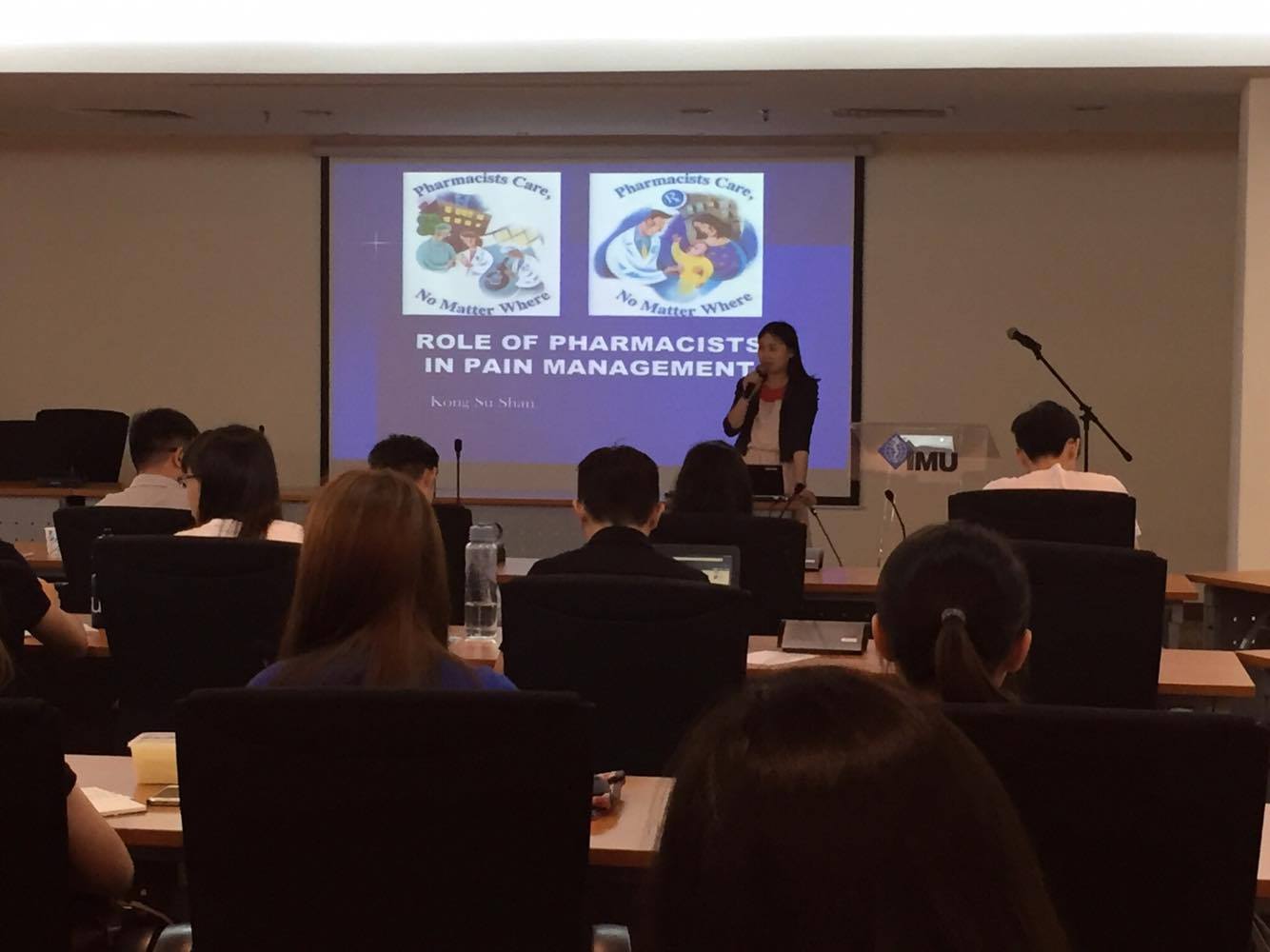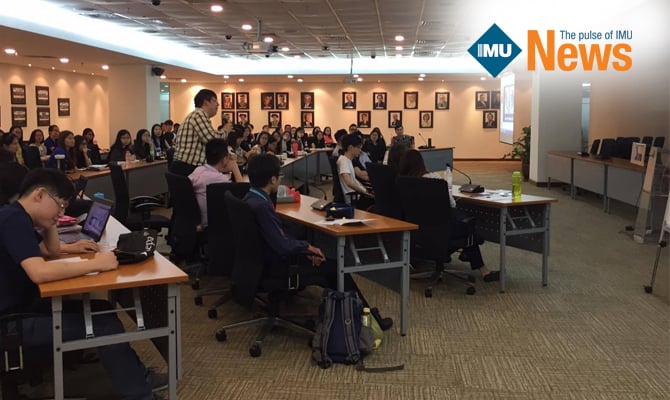15 November 2016 – As a joint collaboration, the Malaysian Pharmaceutical Society – Young Pharmacist Chapter (MPS-YPC), IMU School of Pharmacy and IMU Alumni organised a talk entitled “Pharmacist’s Role in Pain Management” at IMU Bukit Jalil Campus. A total of 80 participants were at the talk. They comprise of IMU lecturers, undergraduate pharmacy students from various universities and practicing pharmacists. Speaker of the talk, Kong Su Shan, is currently working as a Medical Ward Pharmacist at Hospital Ampang. She graduated with a Bachelor of Pharmacy (Hons) from Universiti Malaya and Masters of Clinical Pharmacy from Universiti Kebangsaan Malaysia. With 11 years of experience under her belt, she is also a Board Certified Pharmacotherapy Specialist.
The talk discussed on the pharmacists’ role in managing pain by providing optimal care while reducing the adverse effects of drugs. In 2008, the Ministry of Health implemented “Pain as the Fifth Vital Sign” in hospitals. Since then, it became mandatory to measure and document patients’ pain score at rest, movement, coughing and deep breathing for all patients.
 There are four major roles of pharmacists in pain management under Pain Free Hospital (PFH). The first role is to obtain, store, secure, distribute and dispense medications from the list of medications in the hospital formulary. In this case, the pharmacists would have to ensure the reliability and safety of the medicine prescribed by carefully checking the prescription prior to dispensing. Sufficient verbal and written information should be given to patients as well. Secondly, pharmacists should manage pain effectively. While patients’ health status and medication history should be assessed, patients’ recovery progress and treatment outcomes should be monitored too. Besides that, there should be a systemic assessment of each medication for appropriateness, efficacy, safety and adherence. Thirdly, pharmacists should strive to maintain and improve professional performance. Trainings for pain management should be made compulsory, which may include modules such as pain pathophysiology, pain drugs and pharmacology, pain free hospital concept, acute pain service, chronic pain clinic, and obstetric pain. Last but not least, pharmacists should contribute towards improving the effectiveness of the healthcare system and public health. The talk concluded with the vice-chairperson of MPS-YPC, Dr Mai Chun Wai, presenting a certificate of appreciation to Ms Kong.
There are four major roles of pharmacists in pain management under Pain Free Hospital (PFH). The first role is to obtain, store, secure, distribute and dispense medications from the list of medications in the hospital formulary. In this case, the pharmacists would have to ensure the reliability and safety of the medicine prescribed by carefully checking the prescription prior to dispensing. Sufficient verbal and written information should be given to patients as well. Secondly, pharmacists should manage pain effectively. While patients’ health status and medication history should be assessed, patients’ recovery progress and treatment outcomes should be monitored too. Besides that, there should be a systemic assessment of each medication for appropriateness, efficacy, safety and adherence. Thirdly, pharmacists should strive to maintain and improve professional performance. Trainings for pain management should be made compulsory, which may include modules such as pain pathophysiology, pain drugs and pharmacology, pain free hospital concept, acute pain service, chronic pain clinic, and obstetric pain. Last but not least, pharmacists should contribute towards improving the effectiveness of the healthcare system and public health. The talk concluded with the vice-chairperson of MPS-YPC, Dr Mai Chun Wai, presenting a certificate of appreciation to Ms Kong.
One of the participants provided feedback that the Good Pharmacy Practice (GPP), the pharmacy practice to provide optimal, evidence-based care, mentioned in the talk was eye-opening to him.
As an IMU Dietetics with Nutrition student, I was amazed by the usage of various kinds of drugs that can relieve patients’ pain and I obtained a clearer understanding about the importance of working together as a multidisciplinary team in providing healthcare services.
Written by IMU Student Ambassador, Sang Chui San









